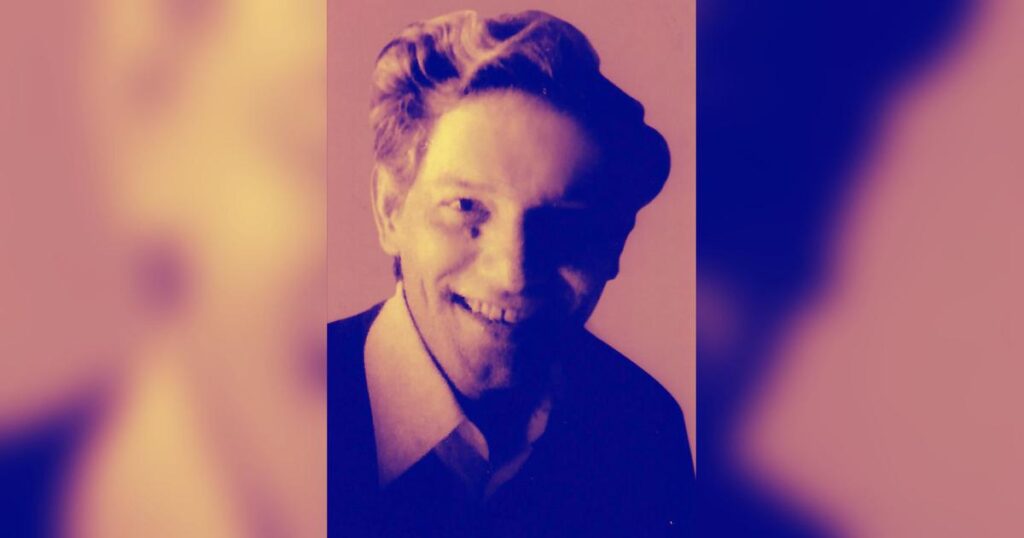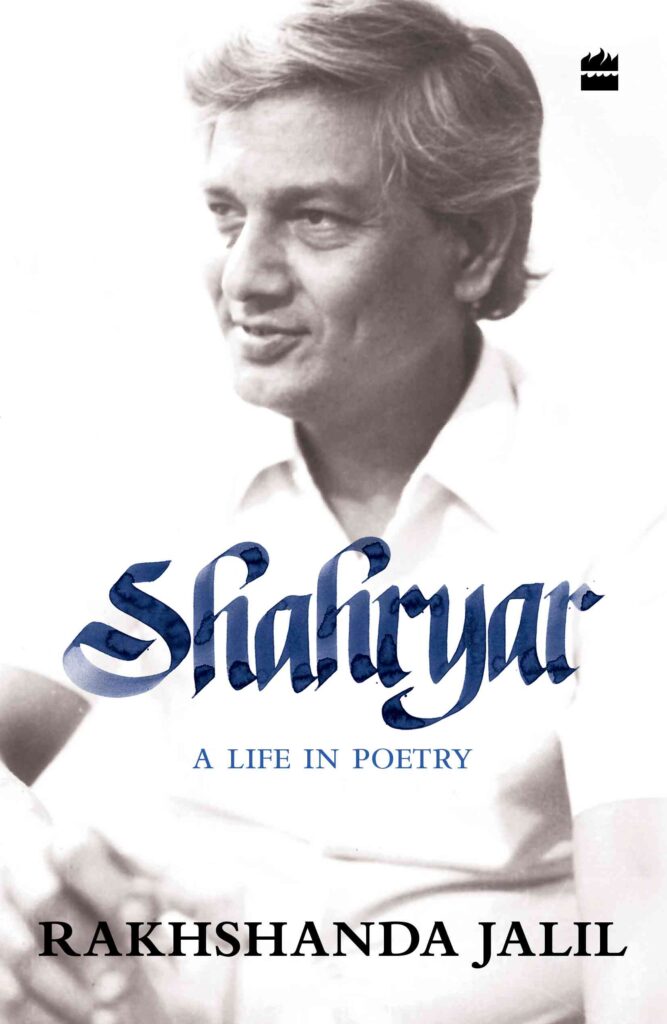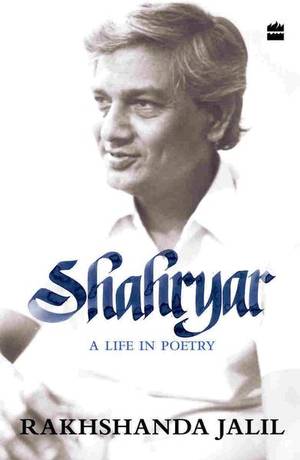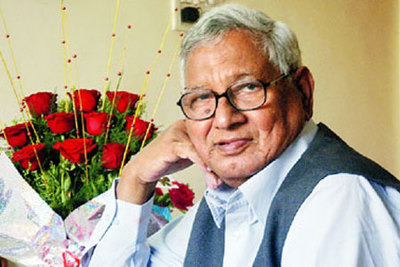Aligarh, UTTAR PRADESH :
A new biography examines the life and work of one of the most acclaimed modern Urdu poets.

The Call of Unknown Destinations
Phir kahin khwaab-o haqiqat ka tasadum hoga
Phir koi manzil-e benaam bulati hai hameinOnce again, a conflict between dreams and reality will rage somewhere
Once again, some nameless destination calls out to me
Naya Din Naya Azaab
Sard shakhon pe os ke qatre
Hain abhi mehv khwaab aur sooraj
Rath pe apne sawaar aata haiA New Day A New Calamity
Drops of dew on cold branches
Are still immersed in their dreams when the sun
Comes riding on his chariotA new kind of poetry began to be written under the influence of the progressives. It loosened the hold of tradition and opened the way to new subjects and styles. From the 1940s new experiments were being conducted in Hindi prose and poetry and the Urdu writer was neither unaware nor unaffected by them; it was much the same in Hindi. Despite the jingoistic nationalism that projected the cause of Hindi and the zeal with which language chauvinists promoted one language along with its literature and respective literary culture, at the expense of the other, there were still some spaces where Urdu and Hindi writers met and interacted.
Aligarh, with its robust Urdu and Hindi departments, had healthy interactions between their respective faculty and several common platforms where writers and teachers of both languages met and exchanged ideas. In fact, the microcosm of Aligarh reflected the situation at the pan-Indian level, that is, of concurrent movements in Hindi and Urdu which prove that the ideas that propelled these movements were collective and widespread rather than unique and localised to individual languages and their respective literary cultures. And, if not mirror images, the Urdu and Hindi literary landscape displayed sufficient similarities to point to a commonality of concerns and inspirations in the years leading up to the 1960s when Shahryar begins to find his poetic voice.
The publication of a slim volume of Hindi poetry, Taar Saptak (1943), opened the door to a new wave of experimentation (prayogvaad) which, in turn, laid the foundation of the nayi kavita (new poetry).
Taar Saptak contained the poetry of seven young poets: Agyeya, Muktibodh, Shamsher, Raghuvir Sahay, Sarveshwar Dayal Saxena, Kedarnath Singh and Kunwar Narain. All seven were firm in their belief that (i) they belonged to no “school” of poetry, (ii) they were merely fellow travellers along the same road, who had differing opinions and worldviews, and (iii) they had not reached a destination or arrived at any grand conclusion; the journey was their destination.
In fact, Agyeya, the compiler of the anthology, went so far as to say that his fellow contributors consider “poetry a subject of experimentation” and that they were “explorers of new ways”. This “new” poetry turned out to be new in both form and content. The Saptak poets – and others who came under their mesmeric, insistent spell – were caught up with the need to convey a deeply-felt, intensely personal, emotional experience.
This resulted in the evolution of startlingly new metaphors and images, radical experiments in form and content, new rhythms and sound patterns that were meant to reflect harsh new truths and the deliberate use of laconic, abstruse even occasionally dense images and ideas. The entire process – spanning close to two decades – bore spectacular fruit by the 1960s.
Elucidating the commonality between the concerns of the Hindi and Urdu poets of the 1960s, especially those who came in the immediate aftermath of the progressive upsurge, Manglesh Dabral, Hindi writer and poet, notes:
“In fact, poetry, both in Urdu and Hindi, of and after the 1960s carries the melancholy, irony and sadness of its time with a ‘pessimism of the mind and an optimism of the heart’, as famously put by the Italian Marxist philosopher Antonio Gramsci.”
The waning of the progressive movement coincided with several other factors that plagued the body politic all through the 1950s and 1960s: disillusionment with the fruits of independence, simmering communal tensions, rampant corruption and unemployment, increasing scepticism about the very idea of freedom, in fact, a fast-eroding faith in any form of organised belief system be it religious, political or intellectual. The nayi kavita in Hindi and the jadeed shairi in Urdu were the result of this manthan or churning in the post-1947 India.
While acknowledging Shahryar’s closeness to the Hindi department in Aligarh, especially its most charismatic teacher Kunwar Pal Singh, Prem Kumar, who taught at a college in the City, Ravindra Bhramar, who was a distinguished poet and teacher in the Department of Hindi, and Neeraj, the pre-eminent Hindi poet of Aligarh who, no matter where he worked, always returned home to his perch in the city, the eminent Urdu critic Gopi Chand Narang however feels Shahryar possibly benefitted more from early models of modernist poetry available in Urdu itself, such as Majeed Amjad, Nasir Kazmi, Muneer Niyazi and the young Turks of the “new wave”. Then there were the French models, the symbolists who had influenced NM Rashid and whose influence was plentifully available in Urdu through some spectacular and image-laden poetry, as well as Ezra Pound and TS Eliot.
Narang mentions the small leftist group lead by Maqsood Rizvi and the influence of Munibur Rehman, poet and teacher, on an entire generation of young men at Aligarh. Shahryar was at the fringes of almost all “left” activity in Aligarh – from his student days, as well as when he was a member of the staff and then again post-retirement till his death. The campus leftists regarded him as a fellow traveller – as one sympathetic to their cause if not exactly one of them, technically speaking, that is. Narang puts it well when he says, succinctly enough, “Shahryar’s urge was inner and his own”.

Poetry, Shahryar believed, must necessarily have an element of music. Without music there can be no poetry and like music, poetry too must follow some rules and principles. Above all, like music, poetry must have rigour.
While it is easy to say that poetry, and music, come naturally to those who are gifted, Shahryar maintained that even the gifted must follow certain rules and regulations if they are to be true to their gift. Mere practice is not sufficient to become proficient as a poet. For a seed to sprout, the soil it is planted in must also be fertile. Also, any seed will not sprout in any soil – no matter how much you may plough it or water it or add nutrients. It might appear as though anybody with any imagination can produce a creative work, but that is not so. Everyone cannot marshal the ideas produced by their imagination, organise them into a coherent and meaningful manner and present them in a way that is pleasing or new. Nor can everyone gather together scattered ideas and thoughts in a way that is startling. The primary function of any art form is to surprise; it is the most magical effect that art can produce.
Shahryar held tradition in great regard. Possibly because he had come through the rigour of a formal and exhaustive education – including a PhD under the exacting early supervision of a teacher such as Ale Ahmad Suroor as well as the guidance of a scholar such as Azmi – that too at a university such as Aligarh’s whose Urdu department boasted some of the finest academicians and greatest connoisseurs of urdu zubaan and tehzeeb. Unlike many of his contemporaries in the new wave of poetry that came in the wake of the progressive upsurge, Shahryar was never one to cock a snook at the centuries-old legacy that the modern Urdu poet had ready access to. He believed that tradition could teach the nuts and bolts of poetry and especially the ghazal, for the tools of Urdu poetry have remained largely unchanged while the outer appearance has changed as has its vocabulary. The manner of crafting a ghazal – a bit like “pouring” ideas into a mould or wine in a bottle – has remained largely the same since the genre of the ghazal was first perfected by masters such as Mir and Sauda.
Like cooking, which Shahryar enjoyed enormously, poetry too was a matter of getting the ingredients right. The metaphors, symbols, abstractions need to be in the right proportion; excess or want can make all the difference between magical and mundane. And just as in cooking, there is that indefinable element called haath ka maza (its literal translation “the taste of the cook’s hand” does not come close to doing justice to its meaning), so also with poetry. The form of the ghazal does not allow much deviation and the vocabulary too is constrained by metre and rhyme; yet, within these time-honoured constraints, the master ghazal-go can produce magic when the reader exclaims with wonder at something that touches his/her heart. Ghalib expressed it best when he said:
Dekhna taqreer ki lazzat ki jo uss ne kaha
Maine yeh jaana ke goya yeh bhi mere dil main haiLook at the deliciousness of speech that when [s]he spoke
I felt as though this too lies within my heartGood poetry can indeed make the reader feel “I could have said this” or “This is exactly how I feel”. And when that threshold is reached, Shahryar believed, the real aesthetic experience happens which is essentially a mystical communication between the writer and the reader or the reciter and the listener.
Shahryar was averse to extreme topicality in poetry. For literature to pass the test of time, he believed, it must contain something within it that would live beyond the here and now. In this he differed from the progressives, especially the more ideologically-driven progressives, who wrote on intensely topical subjects and whose works acquired the tag of waqti adab (topical literature).
As Shahryar said in an interview, it is not important how many poems are written on Korea; instead, what is important is how many good poems we remember being written on Korea. The undue importance being given to mauzu (topic) and maqsadiyat (purposiveness), he believed, was one of the reasons for the decline of the progressive movement:
“Purposive literature must necessarily contain the known and familiar; it has no scope for new experiments. It must have common thoughts, common feelings, and so on. Naturally, therefore, it can only accommodate general things about people, not individuals.”
Making his own position vis-à-vis art and life amply clear, Shahryar was at pains to establish the importance of life in the centuries-old Art vs Life debate – Adab barai Adab (Art for Art’s Sake) and Adab barai Zindagi (Art for Life’s Sake):
“I believe in having respect and regard for all forms of Art on the express condition that Life – in all its myriad glory – must be present in Art. If such a situation arises whereby I am forced to choose between Life and Art, I will choose Life. Poetry is nothing more than this for me…With the coming of the English we Hindustanis discovered that literature holds a mirror to society and a valuable tool for social change. And ever since then we have all, in our own way, been doing this work. Every now and then some of us have declined to – and declined most vociferously – to perform this role.”
Among his seniors, Shahryar has acknowledged the influence of Faiz Ahmad Faiz, Miraji, Muneer Niyazi, Akhtarul Iman; but among his contemporaries his own poetry was likely to have commonalities with Zafar Iqbal, Nasir Kazmi, Ahmad Mushtaq, Muhammad Alvi, Salim Ahmad because they had possibly read and been influenced by the same sort of people he had. In India, he regarded the ghazals of Hasan Naim, Khalilur Rehman Azmi and Shaz Tamkanat as being among the finest – both in terms of technique and content.
However, Gopi Chand Narang offers us another way of seeing Shahryar and viewing him alongside his contemporaries. For one, he doesn’t believe one should necessarily go by how a poet assesses himself with regard to his peers. In his opinion, a poet’s views about himself can be discussed but should not be taken at face value. Narang goes on to say how “all poets, including Ghalib or Mir, try to play safe … they may exaggerate or deconstruct. There is always a crisscross of influences…”
Narang is also willing to speculate that since Azmi was the earliest mentor, his must have been the earliest influence on Shahryar’s poetry and it is possible that Shahryar chose to list Shaz Tamkanat and Hasan Naim rather than Azmi as the two were indeed current in those days and he might even have liked their works. But Narang himself is of the opinion that there is no trace of either Tamkanat or Naim in Shahryar; the two score in terms of craft but little else, whereas Shahryar “speaks in his own voice, an authentic voice. There is no trace of even Mir or Ghalib what to speak of Tamkanat.” Though Narang goes on to concede, “there may be a bit of Nasir Kazmi or Muneer Niyazi…They were the poets of their age. Muneer in his own natural way of wonder and awe viz a viz the onslaught of urban culture and Nasir Kazmi, via Firaq Gorakhpuri, rediscovered the painful and lonesome voice of Mir.”
But Shahryar’s creativity, Narang insists, was his own. Even if he wanted, Shahryar could not go the way of Nasir Kazmi or Muneer Niyazi. Shahryar interacted with them just as he did with his other contemporaries and fellow poets at mushairas and nashists but “once he had found his voice he was content and hardly looked around.” (emphasis mine.)
So, was Shahryar a progressive? Or was he modernist? This question has vexed many, for while he started writing poetry and gaining recognition as a poet when the modernist movement was gaining momentum, Shahryar himself was at pains to establish his socialist-Marxist credentials.
We have already established that when it came to the crunch, in a debate on Art for Art’s Sake vs Art for Life’s Sake, Shahryar could not have aligned himself with the former. Asked if poetry can afford to be wilfully self-referential, his answer was equally unequivocal: “There can be no poetry without the self.” But he was also quick to clarify:
“At the same time, no one can be expected to be interested in the purely personal details of other people’s lives, in the joys and sorrows of others. Some poets have tried to do that, for instance Akhtar Shirani wrote poetry that was intensely romantic yet extremely personal. But that has never appealed to me. I have a Marxist world view. I believe in the social and political commitment of literature. You may not always find direct references to my worldview in my poetry. But you will find them in the oblique and the symbolic.”
Asked if poetry must necessarily have a social commitment, a framework within which it must be located and a frame of reference that is accessible to all its readers, Shahryar’s answer became more general. All good poets, be it Iqbal or Faiz, he said, speak of the world, to the world. And then he tossed a “googly” at me when I was least expecting it by declaring: “In some respects, Faiz is a greater poet than Iqbal precisely because he is more human, more interested in all humanity and not one community or group.” This one seemingly offhand statement, possibly made on the spur of the moment, seems to contain the kernel of Shahryar’s own poetic vision and holds the key to understanding his perception of a poet’s role in society.
Excerpted with permission from Shahryar: A Life in Poetry, by Rakhshanda Jalil, HarperCollins India.
source: http://www.scroll.in / Scroll.in / Home> Book Excerpt / by Rakshanda Jalil / August 24th, 2018










